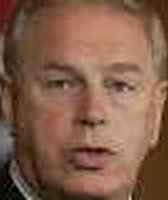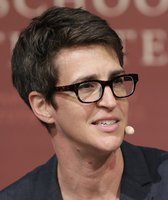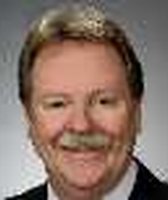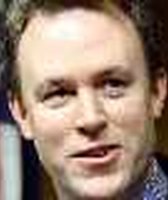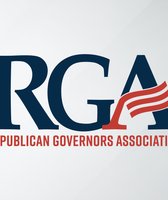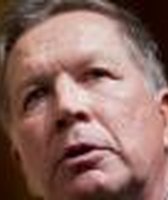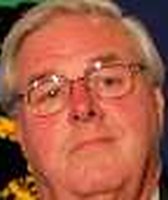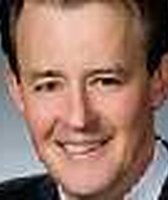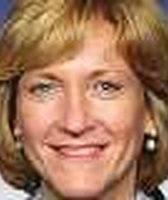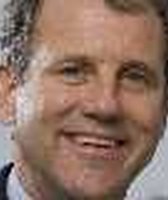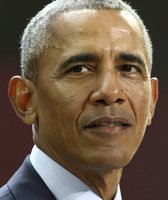Stand up for the facts!
Our only agenda is to publish the truth so you can be an informed participant in democracy.
We need your help.
I would like to contribute
Ted Strickland says Ohio's economic turnaround began in early 2010 while he was still governor
Ted Strickland is out. But don’t for a minute think the former Ohio governor’s record won’t remain a club in the bag of Republican incumbent John Kasich’s re-election campaign next year.
So while removing himself this month from the Democratic gubernatorial sweepstakes in 2014, Strickland was sure to put a positive spin on his own four years at the Statehouse.
"With the help of President Obama, who provided the funds necessary to keep Ohio and all of America from slipping into another Great Depression, we were able to preserve the social safety net, make important investments in education, and position Ohio’s economy for the recovery that started in February 2010," Strickland said in an email distributed by the Ohio Democratic Party.
Kasich won a close contest in 2010 by emphasizing the state’s economic decline on Strickland’s watch. Since then, a steady drop in Ohio unemployment figures has been seen as helpful to Obama’s re-election last year and to Kasich’s improved standing in public opinion polls.
As speculation shifted to other Democratic prospects, the sentiment Strickland clearly hoped to convey with his statement was that Republicans do not deserve all the credit for recovery in the state. But is the sentiment rooted in accuracy or revisionist history? PolitiFact Ohio decided to take a look.
Luckily we were quite familiar with Strickland’s assertion, as it has been a key talking point for Democrats. We confirmed with Jerid Kurtz, communications director for the state party, that it was based primarily on unemployment numberstallied by the U.S. Bureau of Labor Statistics.
For the seven months encompassing July 2009 through January 2010, Ohio’s unemployment rate was at a 10-year high of 10.6 percent, according to the BLS. In February 2010, the rate dropped to 10.5 percent -- the first month-to-month decrease since November 2007.
After February 2010, the state’s monthly unemployment rate continued to decline for a year, then leveled between 8.8 and 8.9 percent in mid-2011 before dropping again. Preliminary numbers for December 2012place the unemployment rate at 6.7 percent, the lowest since July 2008.
As additional backup, Kurtz pointed to a March 2011 BLS release, which notes employment boosts in several sectors during 2010, Strickland’s last year in office. Manufacturing jobs, for example, increased by 9,300 jobs between January 2010 and December 2010. Employment in education and health services grew by 12,300 jobs over the same period. (Other sectors lost jobs, including financial activities, which reported 5,200 fewer jobs at the end of the year.)
This is not the first time Democrats have argued that the state’s economy was rosier than Kasich implied in 2010. Strickland’s budget director, Pari Sabety, said in November 2010 that the economy was "on the mend" and "in better shape than when we took office."
PolitiFact Ohio evaluated that claimand talked to economic experts who disputed the "better shape" part of Sabety’s statement. The experts said employment figures are the true measure of the health of a state’s economy. At the time 350,000 fewer Ohioans had jobs than when Strickland took office. But two of the experts believed at least a modest recovery was afoot.
Sabety’s claim rated a Half True on the Truth-O-Meter.
We reconnected with Ken Mayland, an economist with Pepper Pike’s ClearView Economics and one of the experts cited in the check of Sabety’s November 2010 statement. Mayland said that employment numbers offer a clearer picture of an economy because they measure who is working. The unemployment rate excludes those who have stopped searching for work.
Mayland said it’s likely the tide began to turn for Ohio as early as 2009, when the national recession ended according to the National Bureau of Economic Research. Our check of BLS data shows that after months of decline, the number of employed Ohioans began climbing in January 2010. Employment dipped again that summer but was rebounding by fall. Nearly 30,000 more Ohioans were employed in December 2010 than at the beginning of the year.
Under Kasich, Ohio’s employment ranks have grown by another 80,000, according to the BLS.
We also checked in with Cleveland economic research analyst George Zeller, another expert. Zeller finds fault with the BLS model favored by others and prefers the Quarterly Census of Employment and Wages. Zeller said the QCEW numbers show that Ohio began gaining jobs in 2010, but several months later than February.
If he had to pick a month when the Ohio economy began to turn around, Zeller said he would choose July 2010 or October 2010. "In the end," Zeller wrote in an email to PolitiFact Ohio, "more than a third of all the net jobs gained in Ohio during 2010 were in October 2010."
Strickland, in announcing he would sit out in 2014, said Ohio’s economic recovery "started in February 2010." The Ohio Democratic Party, which circulated the release, attributed the remark to BLS figures that showed the first in a series of unemployment declines came that month.
Economics is never so simple. One expert thinks the recovery might have started earlier, another believes it started a few months later. Strickland served from 2007 through 2010. The timeline might not be as precise as he suggests, but evidence and expertise confirm the accuracy of his larger point: that Ohio’s recovery started while he was governor.
There’s also the matter of Strickland clearly attempting to share credit for the recovery with Obama, whose support of an auto industry bailout was seen as crucial to Ohio’s economy.
"No governor," Mayland said, "gets blame for the national recession, so no governor should get the credit for the recovery. You can have policies on the margins that help you do a little better."
PolitiFact Ohio understands that as long as politics exist, politicians will take credit and assign blame for fluctuations in the economy. It was Kasich, after all, who repeatedly dinged Strickland for hundreds of thousands of lost jobs. The issue is likely to remain a key talking point in the 2014 gubernatorial race. So if Strickland and his Democratic allies must resort to the 2010 recovery to defend themselves, they would better serve the truth by not singling out a month.
As is, Strickland’s claim requires clarification. On the Truth-O-Meter, that makes it Mostly True.
Our Sources
Ohio Democratic Party, statement from former Gov. Ted Strickland, Jan. 8, 2013
Email exchange with Jerid Kurtz of the Ohio Democratic Party, Jan. 15, 2013
U.S. Bureau of Labor Statistics, local area unemployment statistics for Ohio
The Plain Dealer, via cleveland.com, "Ohio’s jobless rate down to 6.7 percent in December, despite state losing jobs," by Olivera Perkins, Jan. 18, 2013
BLS, regional and state employment and unemployment for January 2011, March 10, 2011
PolitiFact Ohio, "State budget director Pari Sabety says Ohio’s economy is on the mend, stronger than when Strickland took office," by Aaron Marshall, Nov. 19, 2010
Interview with economist Ken Mayland, Jan. 21, 2013
National Bureau of Economic Research, "U.S. Business Cycle Expansions and Contractions"
Email exchange with economic research analyst George Zeller, Jan. 21, 2013
Browse the Truth-O-Meter
More by Henry J. Gomez
Ted Strickland says Ohio's economic turnaround began in early 2010 while he was still governor
Support independent fact-checking.
Become a member!
In a world of wild talk and fake news, help us stand up for the facts.

